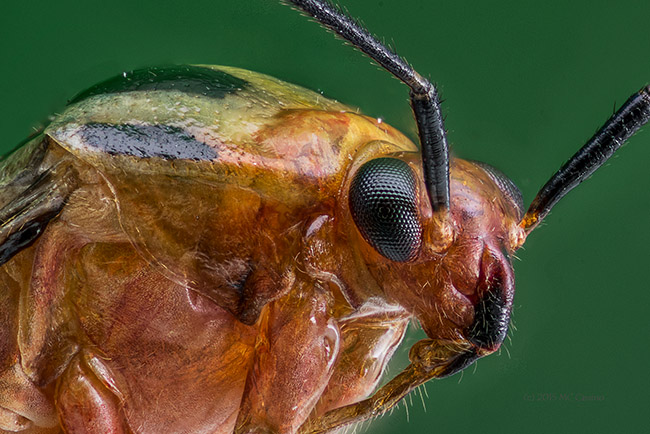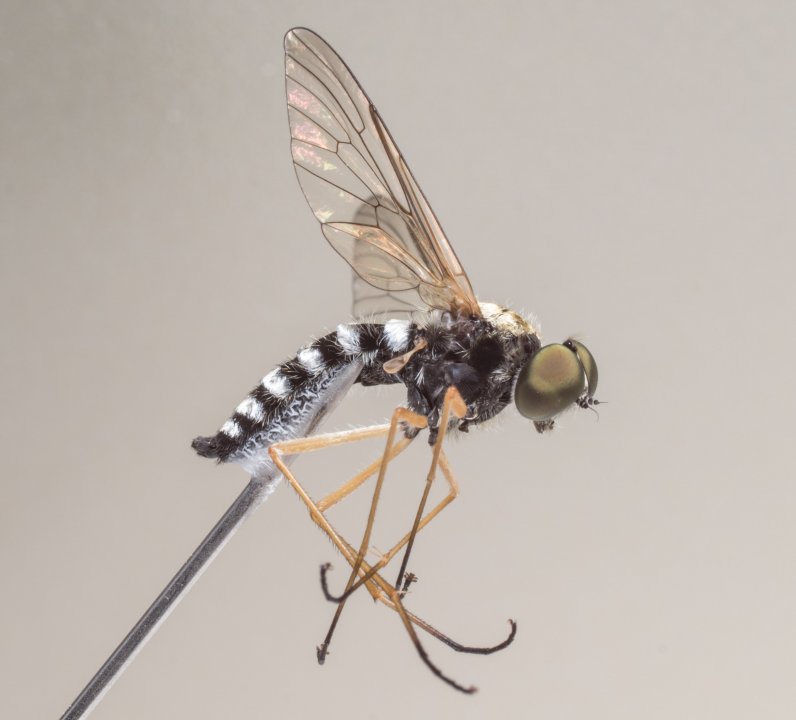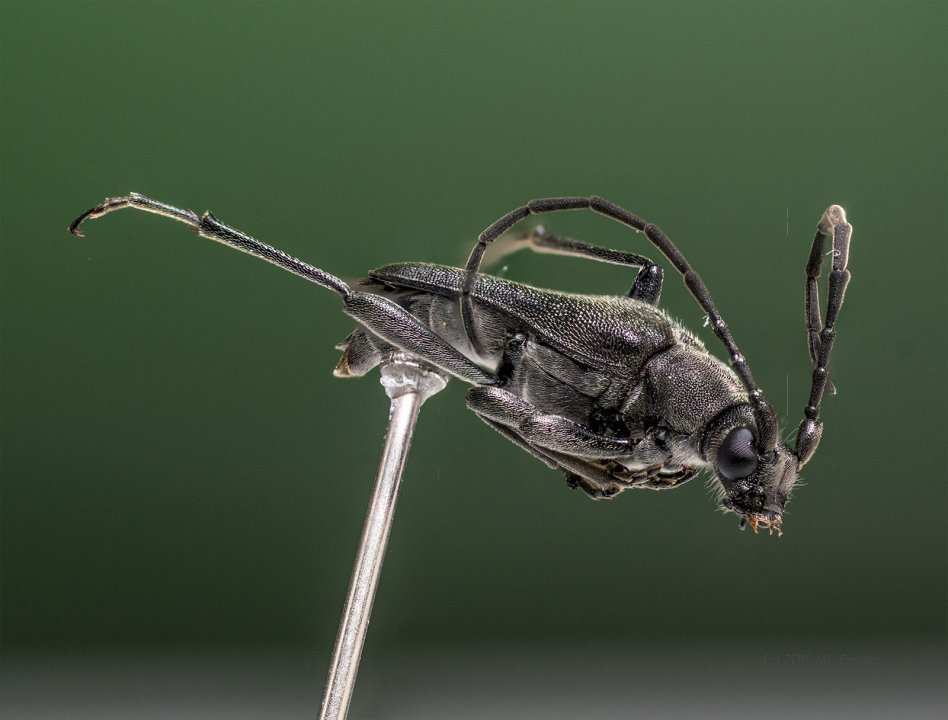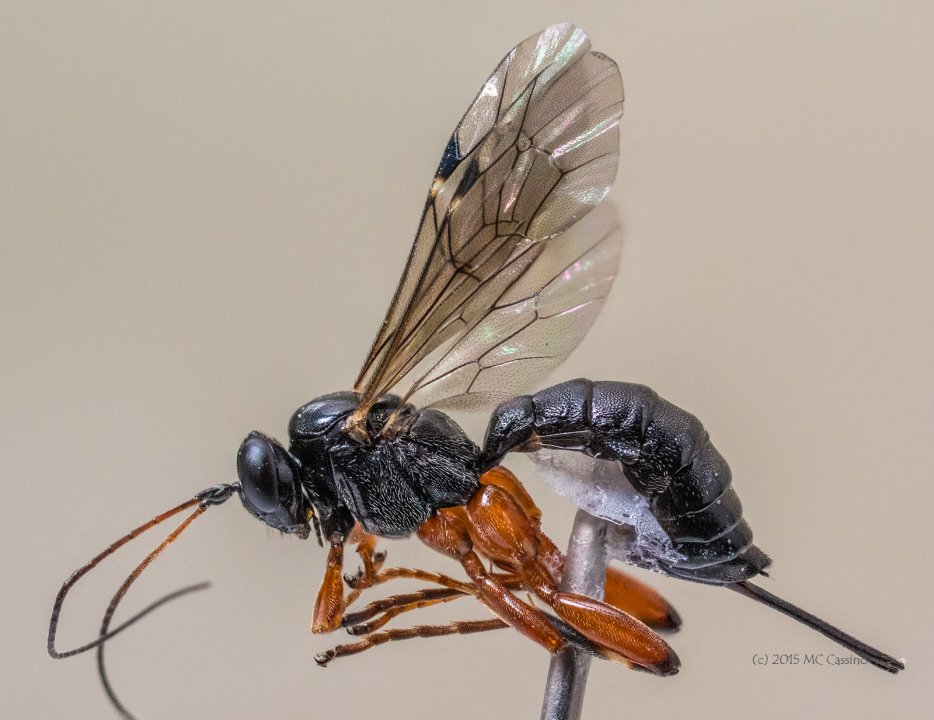A few weeks ago, these Four Lined Plant Bugs (Poecilocapsus lineatus) and their smaller nymphs started munching on a patch of feral spearmint that is growing along the side of my yard. More recently they have taken up on of the Gray Coneflower that is one of the core plants in my little wildflower garden. So, I grabbed a few of them to use for photos:

Four Lined Plant Bug (Poecilocapsus lineatus)
This was a real bear to photograph! I worked through a few specimens over the course of several days, experimenting with different optics, lighting setups and stacking / post processing techniques. Having multiple identical subjects allowed me to take the time to systematically work through various alternatives - though this subject was a little far gone in this final stack.
This was taken at roughly 5.5x lifesized. I worked through a few specimens and initially tried a couple different 28mm lenses reverse mounted on extension tubes. I first tired an older Ricoh XR Rikenon 28mm f2.8 and then a Pentax SMC A 28mm f2.8. In both cases, the optical quality was good but not excellent. I then switched over to using a reverse mounted Pentax DFA 50mm f2.8 and increased the extension by adding a bellows to the tubes. Obviously, I had to double the extension to get comparable magnification, and so the setup (close to 300 mm of extension) was pretty awkward to work with, but not as bad as I expected. Illuminating the subject purely by flash helped minimize any motion blur that was taking place.
The insect's very shiny wings were another challenge - the first several photographs had intense hot spots on those shiny wings. These were finally tamed by filtering the flash first through a DIY diffuser (a slightly opaque sheet of plastic) a few inches from the flash head and then through a sheet of copier paper. The second flash, used for fill, was bounced off a piece of 8 x 10 mat board. The main flash was above the subject, slightly to the right and the fill light was slightly below the subject and hard to the right.
This subject was over 48 hours old by the time I made the switch to the 50mm lens, and just as I was starting the first stack a slight nudge of the now dried insect resulted in the front legs falling off, leaving only the first leg segment attached to the body. I was pretty tired of this bug by then and just continued shooting, but have cropped the image by about 30% to hide the missing legs and also some of the edge artifacts from the stacking process. There are other signs of wear on the specimen as well.
All in all this was a lot of work with a subject that seemed to grow less interesting with each passing hour - but I learned some new things that hopefully will be put to good use with other subjects in the future.
This final image was made with a Pentax K3, DFA 50mm f2.8 macro reverse mounted on on approximately 300mm of extension. 55 stacked images - Zerene Stacker, PMax and DMap methods blended and retouched in Photoshop CS6.















